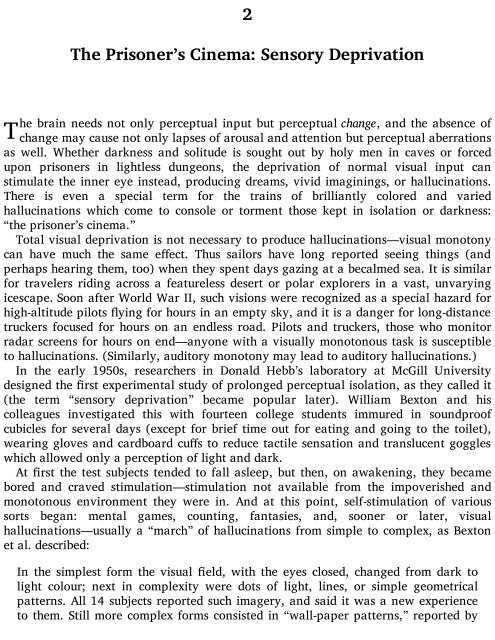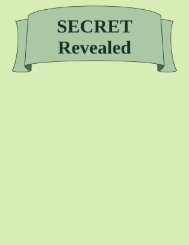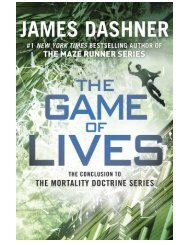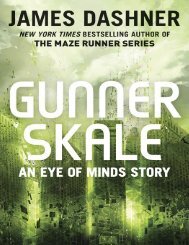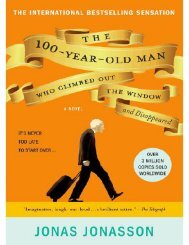32896589326509350
You also want an ePaper? Increase the reach of your titles
YUMPU automatically turns print PDFs into web optimized ePapers that Google loves.
2<br />
The Prisoner’s Cinema: Sensory Deprivation<br />
T<br />
he brain needs not only perceptual input but perceptual change, and the absence of<br />
change may cause not only lapses of arousal and attention but perceptual aberrations<br />
as well. Whether darkness and solitude is sought out by holy men in caves or forced<br />
upon prisoners in lightless dungeons, the deprivation of normal visual input can<br />
stimulate the inner eye instead, producing dreams, vivid imaginings, or hallucinations.<br />
There is even a special term for the trains of brilliantly colored and varied<br />
hallucinations which come to console or torment those kept in isolation or darkness:<br />
“the prisoner’s cinema.”<br />
Total visual deprivation is not necessary to produce hallucinations—visual monotony<br />
can have much the same eect. Thus sailors have long reported seeing things (and<br />
perhaps hearing them, too) when they spent days gazing at a becalmed sea. It is similar<br />
for travelers riding across a featureless desert or polar explorers in a vast, unvarying<br />
icescape. Soon after World War II, such visions were recognized as a special hazard for<br />
high-altitude pilots ying for hours in an empty sky, and it is a danger for long-distance<br />
truckers focused for hours on an endless road. Pilots and truckers, those who monitor<br />
radar screens for hours on end—anyone with a visually monotonous task is susceptible<br />
to hallucinations. (Similarly, auditory monotony may lead to auditory hallucinations.)<br />
In the early 1950s, researchers in Donald Hebb’s laboratory at McGill University<br />
designed the rst experimental study of prolonged perceptual isolation, as they called it<br />
(the term “sensory deprivation” became popular later). William Bexton and his<br />
colleagues investigated this with fourteen college students immured in soundproof<br />
cubicles for several days (except for brief time out for eating and going to the toilet),<br />
wearing gloves and cardboard cus to reduce tactile sensation and translucent goggles<br />
which allowed only a perception of light and dark.<br />
At rst the test subjects tended to fall asleep, but then, on awakening, they became<br />
bored and craved stimulation—stimulation not available from the impoverished and<br />
monotonous environment they were in. And at this point, self-stimulation of various<br />
sorts began: mental games, counting, fantasies, and, sooner or later, visual<br />
hallucinations—usually a “march” of hallucinations from simple to complex, as Bexton<br />
et al. described:<br />
In the simplest form the visual eld, with the eyes closed, changed from dark to<br />
light colour; next in complexity were dots of light, lines, or simple geometrical<br />
patterns. All 14 subjects reported such imagery, and said it was a new experience<br />
to them. Still more complex forms consisted in “wall-paper patterns,” reported by


